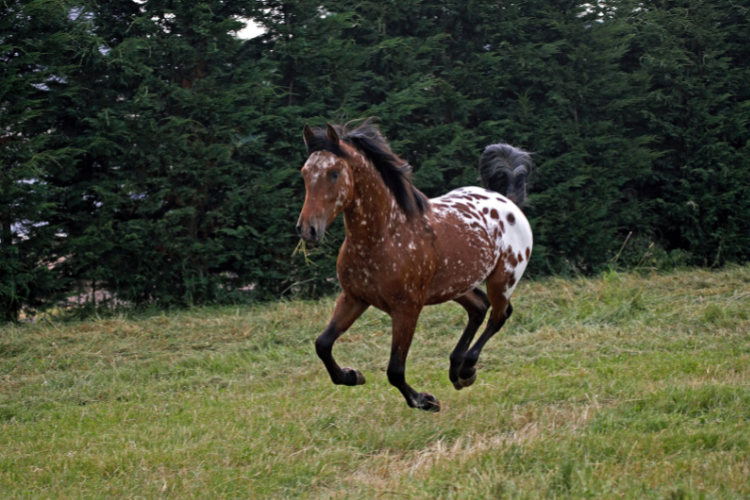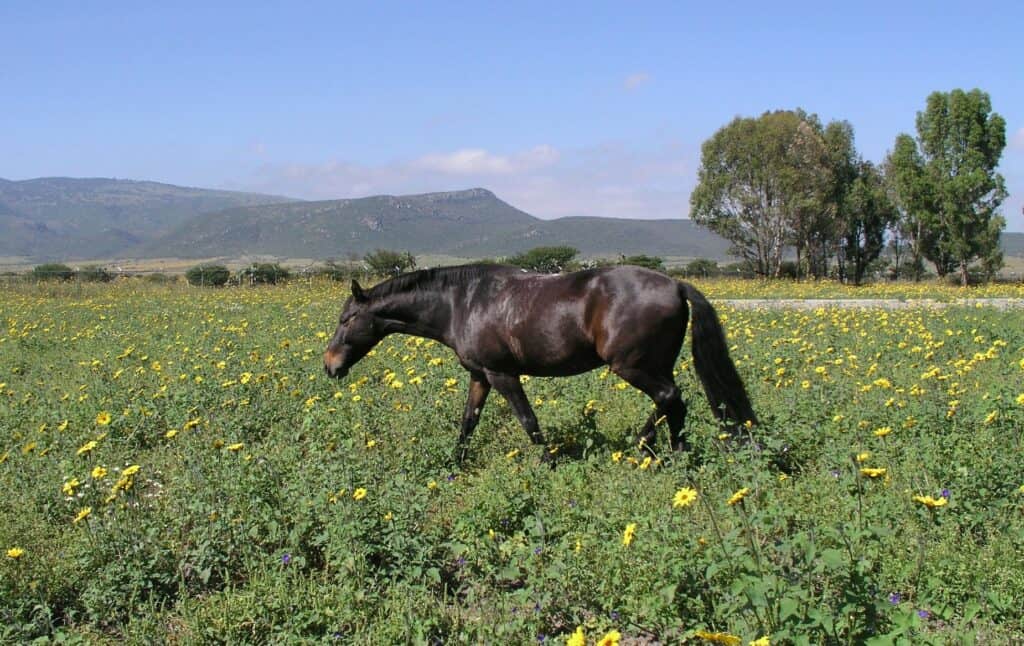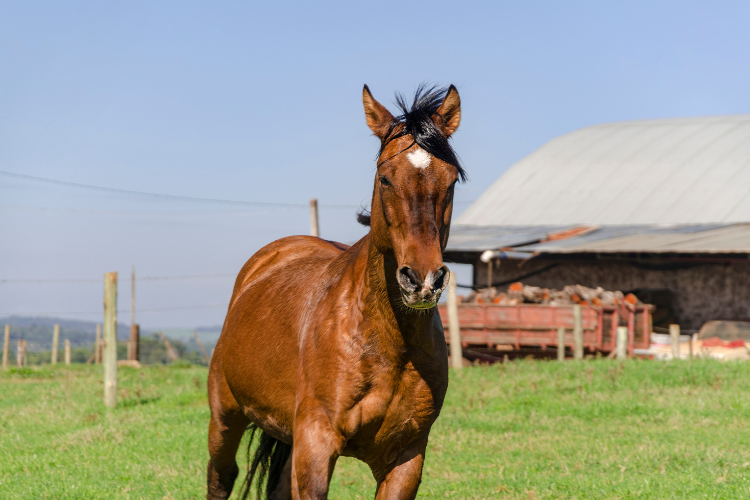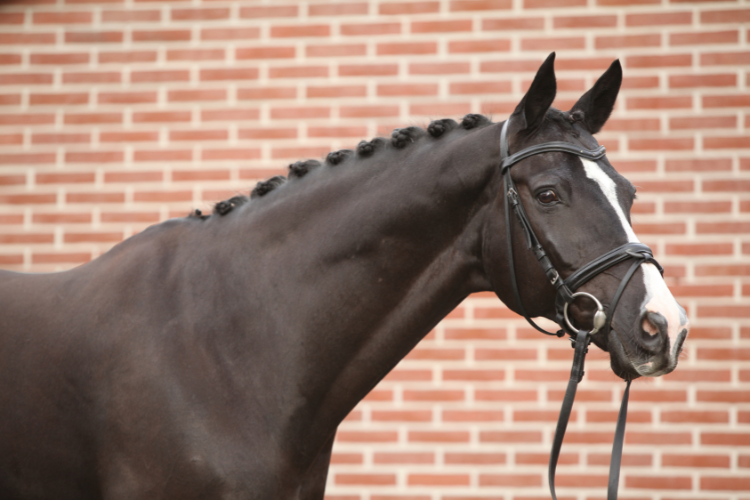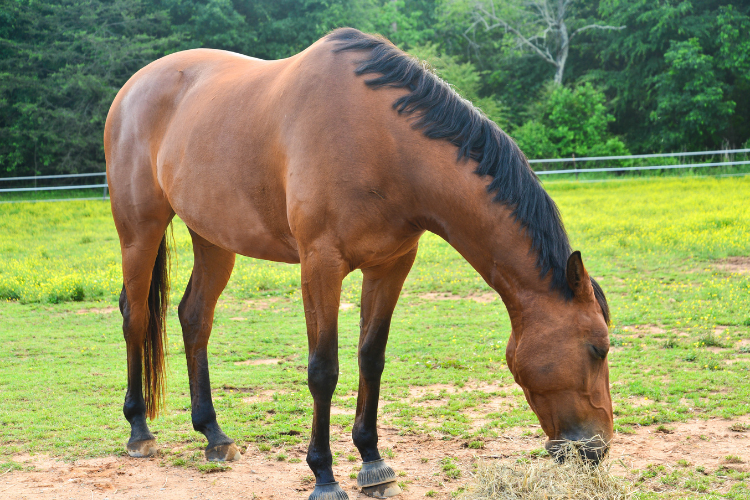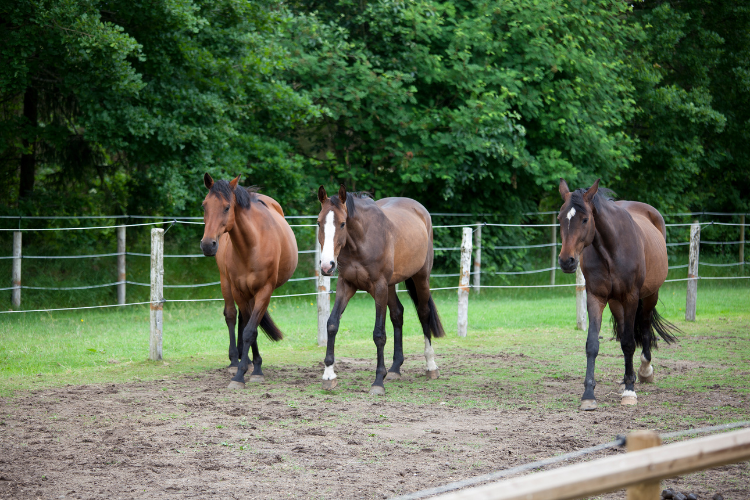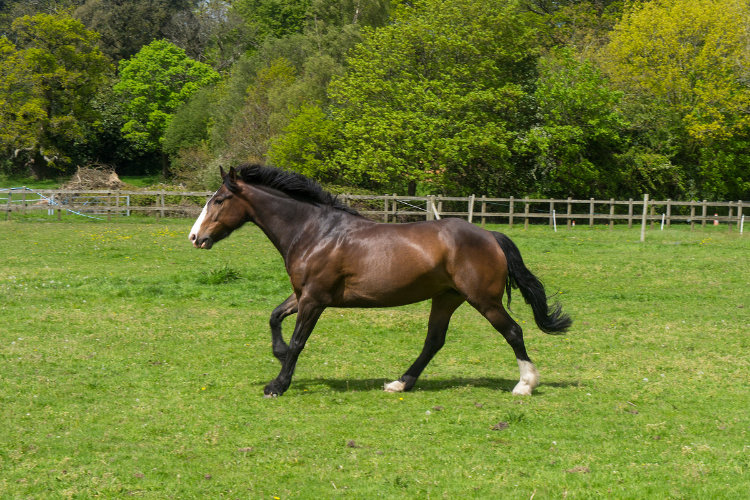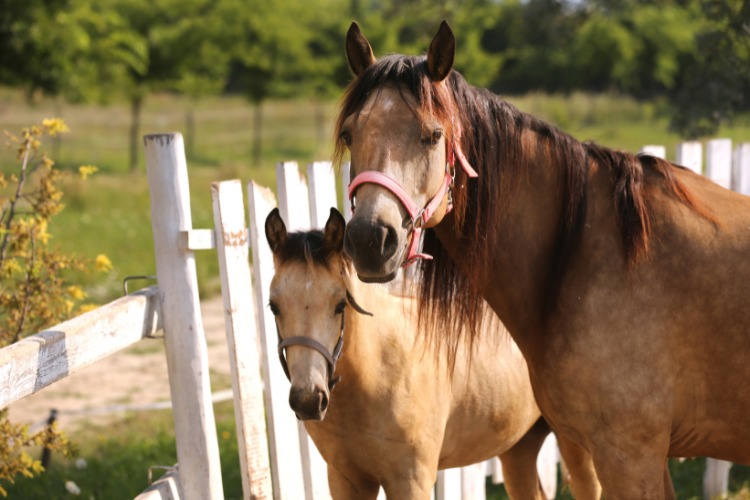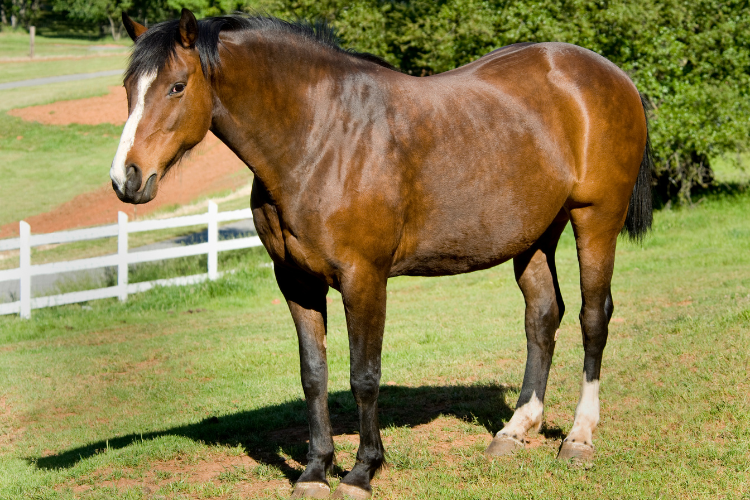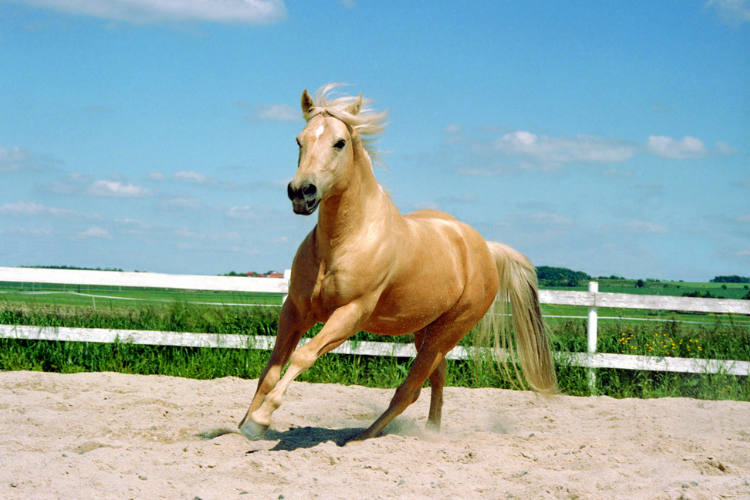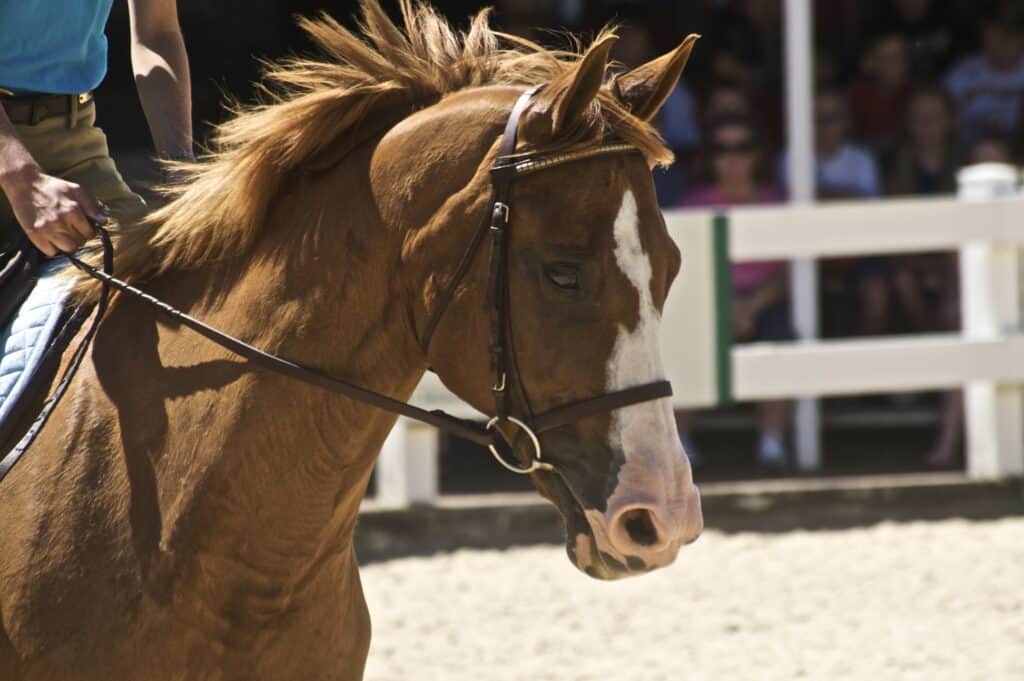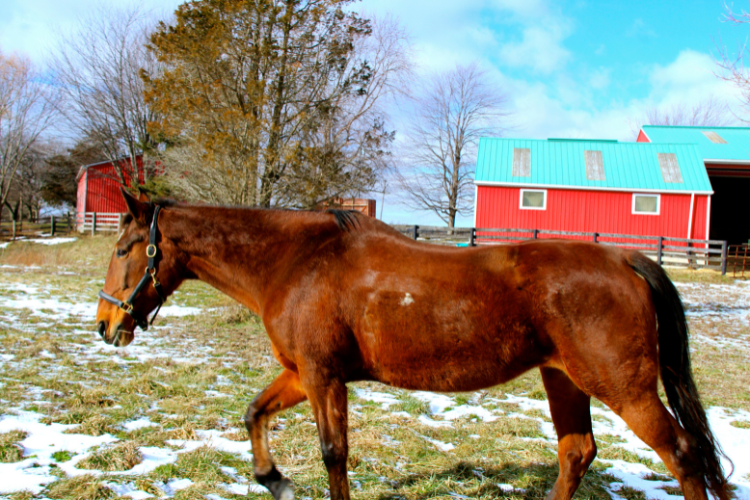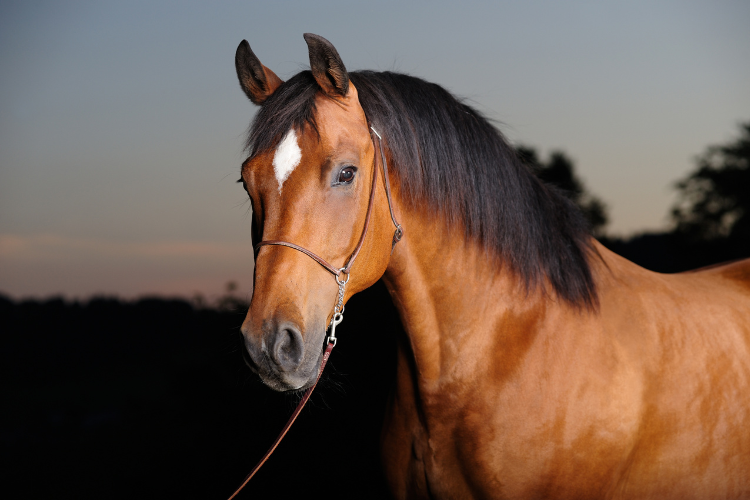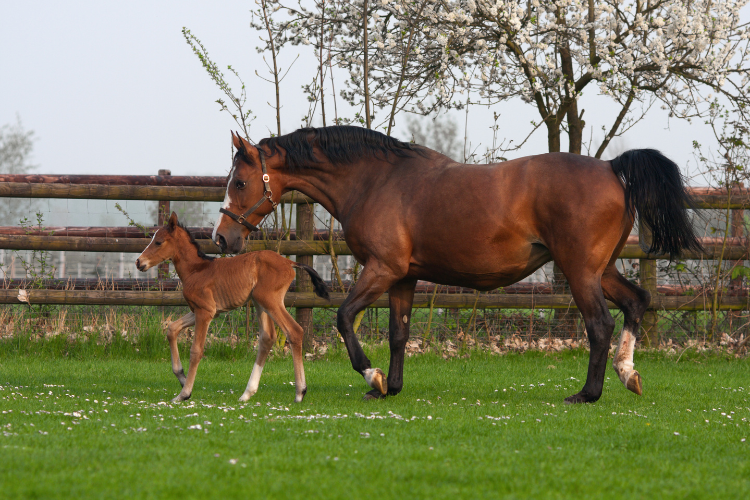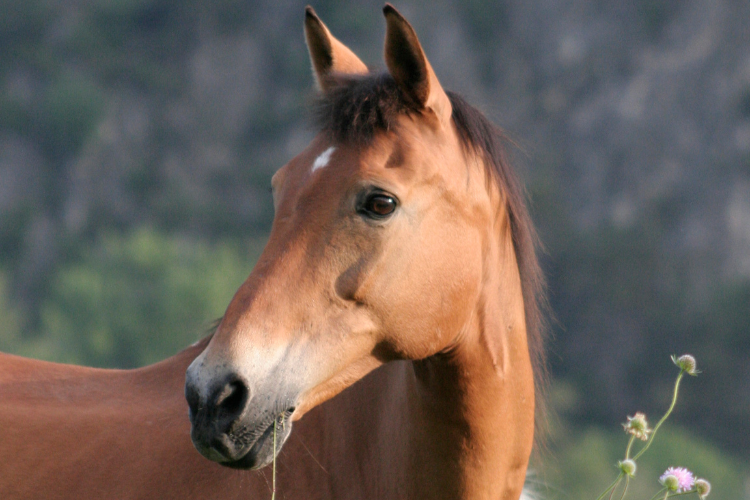- How Much Does a Bale of Hay Cost - August 15, 2023
- What is a Grade Horse: A Comprehensive Guide on Unknown Creatures of the Equestrian World - August 1, 2023
- Best Barrell Saddles - July 31, 2023
Horses may have marvelous builds, but their versatility is what makes them unique and so great. Warmbloods, a paradigm of such versatility, are relatively new in the equine family. Ideal for cavalry and transporting heavy equipment or carriages, their origin lies in their name, i.e., they are a mix of Hotblood and Coldblood horses.
And talking about Hotbloods and Coldboloods, these two are perfect for specific jobs, i.e., those requiring speed and strength, respectively. However, the inception of warmbloods allowed the same horse to carry out duties that needed both agility and power.
My experience with Warmbloods allows me to say that these are the best horses that will never let you down in any equestrian activity. And as an equestrian and a horse lover myself, it makes me more than happy to share my knowledge about these dignified animals.
So in this extensive Warmbloods horse guide, I am going to cover as much as I can about different breeds of Warmblood horses, while also answering some of the most common queries my fellow equestrians may have about them.
Bottom Line Up Front
There are various breeds of Warmblood horses, and most of them have a unique set of characteristics that allow them to stand out. Still, Warmbloods are usually seen participating in equestrian sports such as dressage, eventing, showjumping, and combined driving.
And if I were to talk about my personal favorite, the Warmblood breed that intrigued me the most is the Standardbred horse. It has an agile build with well-developed, strong legs. It also comes in primarily solid colors without much spotting.
List Of Warmbloods In This Guide
As discussed earlier, there are several breeds of warmbloods, all showing some unique features. These breeds are spread across different parts of the world. However, It’s not possible to discuss every Warmblood breed in this guide; therefore, my focus will be on the following 15 most famous warmblood breeds:
- Appaloosa Horse
- Azteca
- Criollo
- Dutch Warmblood
- Hanoverian
- Holsteiner
- Irish Sport Horse
- Morgan
- Oldenburg
- Quarter Horse
- Selle Français
- Standardbred
- Trakehner
- Westphalian
- Zweibrücker
Appaloosa Horse
The Appaloosa horse is known for its distinctive physical appearance. If I talk about one of the physical characteristics that attract me most toward this breed is their pure white sclera. But these beautiful eyes are prone to inflammation due to a disease quite common in the breed: Equine Recurrent Uveitis (ERU).
Besides that, its body is also covered in mesmerizing spots, making the Appaloosa distinguishable and recognizable. However, it can also be spotted through its mottled skin, even if it doesn’t possess those famous spots.
Compared to most Warmbloods, I found it has a small body, a reasonably long neck, and a deep chest. An average Appaloosa weighs from 950 to 1250 pounds and exhibits a height of about 14 to 16 hands.
And while talking about its fame, it is also considered the state horse of Idaho. The breed is also commonly seen in Western films, including some notable projects like “The Appaloosa” and 1966’s “El Dorado.” This fame can be traced back to the contributions of The Appaloosa Horse Club, the most prominent organization and registry responsible for promoting this breed.
The strong legs of the Appaloosa make it ideal for Western and English riding styles. Not to mention, it is also used in jumping and fox hunting events.
Azteca
These majestic beasts have unwavering stamina and energy, allowing them to be a part of various sports, not to mention they have the potential to dominate most of them. And the fact that they have a good memory is nonetheless a fascinating fact that helps them learn and progress pretty quickly.
Apart from their intelligence, they are also physically strong, with muscular bodies, except for the legs that are relatively slim. These horses are also a little shorter in height, i.e., 14.2 to 15.3 hands tall, but this allows them to be pretty agile.
I would also like to mention that there is no limit as to the color variation found in Aztecas; however, the most common color this breed exhibits is gray.
And even though they are warm-blooded horses, their temperament can be anything but calm and collected. But it can be made collected through proper training. But its temperament isn’t the only thing that makes its grooming hard, as diseases like colic and laminitis are also pretty common amongst Aztecs.
The athleticism of these horses allows them to prove their mettle in many challenging equestrian games, especially bullfighting, roping, and polo.
Criollo
Criollos are a well-known breed of South America and are often associated with Argentina. These are some of the most unique-looking horse breeds due to their skin patterns and color variations. Furthermore, Criollo is the shortest breed of Warmbloods, with their physiques ranging from 13 to 14.3 hands.
However, their small size should not be misleading as they are one of the most resilient and tough horses. The adaptability they possess is also unmatched as they have survived the harshest climates found on this planet.
This mix of toughness and versatility makes them a preferred choice of many equestrians in rodeo competitions, especially the young equestrians. And when it comes to toughness, Mancho and Gato, the celebrity Criollo horses in South America, still remain unparalleled.
Criollos are also widely used for cattle farming and pleasure riding. But their temperament is not as friendly as other Warmbloods. Training these horses can be a difficult chapter, but if you make it through, these horses prove to be quite the companions.
Most Criollo horses exhibit a dun color pattern, which is also the most popular color among Criollo lovers. However, despite their small size, the Criollos are among the most expensive horses costing around $8000-12000.
Dutch Warmblood
This breed is perhaps one of the most recent additions to Warmbloods. The main idea behind breeding Dutch Warmbloods was to produce an active and agile horse, and they definitely nailed that.
The horse possesses a stunning physique, and a variety of solid colors such as black, bay, brown, gray, and chestnut make the breed quite fascinating. Another distinct feature of this Warmblood breed is its long legs that hold its sturdy rectangular frame, which can usually go about 1400-1500 pounds.
It also seems apparent that a horse of such agile nature is best suited for dressage and showjumping. And I would most definitely suggest the Dutch Warmblood for a beginner, as it is incredibly loving, understanding, and trainable. But their lifespan is shorter at only 28-29 years.
Being a Dutch breed, its registry is maintained by a Dutch organization, Koninkljik Warmblood Paardenstamboke Nederland. If you are into dressage, you should have heard about the famous Totilas, a Dutch Warmblood which sold for $13 million, making this breed quite revered among the equestrian community.
Hanoverian
This breed is often described as “elegant, strong, and robust.” Hanoverians were originally bred from Hotbloods and local mares to produce a new versatile breed that could prove helpful in both farming and war. However, the modern-day Hanoverians are known for their marvels in sports such as dressage and jumping.
Hanoverians possess a calm and composed nature; this allows them to be trained without a lot of fuss. This breed is associated with a large size, around 15.3–17.1 hands; therefore, their food intake is also considerably large. Hence, a fully mature Hanoverian weighs about 1400 pounds. But unlike their appetite, solid colors like brown, gray, and black surely give them an elegant look.
The Hanoverian is perhaps one of the most popular and expensive Warmblood horses ever, as SPH Dante, a famous jumper horse, was sold for a whopping $3.26 million in 2014.
Holsteiner
The Holsteiner is another famous warmblood horse from Germany and is a predecessor to the Hanoverian. These horses are dignified and exalted in equestrian sports due to their appreciable physical abilities.
They possess outstanding agility, making them extremely fast. And their jumping ability also can’t be ignored, thanks to their muscular hind quarter. They are one of the most preferred horses in Olympics and FEI show jumping events.
Even though they seem to have a basic appearance, there are elements of grace and style about these horses that I find incredibly breathtaking. They have tall and sturdy bodies, and their undeniable intelligence is quite noticeable, making them very easy to train.
They can reach up to 17 hands in height and weigh about 1200-1500 pounds. Mostly, they have black, dark bay, and chestnut coats.
This might to interesting to know that the modern Holsteiners are lightweight horses as compared to the ‘classic Holsteiners,’ which were quite heavy with a different and larger bone structure.
This indicates that they have gone through a pervasive breeding process over the years. But this has led the breed to envelop many genetic diseases leading to Dysfunction and Blepharospasm. This is also the reason its average life expectancy is only 20 years.
Irish Sport Horse
And as the name suggests, the Irish Sport horse is an ideal breed for equestrian sports. It is notable for its participation in showjumping, eventing, and even dressage.
It is also noticeably large compared to other horse breeds. This can be credited to its breeding standards which include a long neck, a slightly bulging face, and big ears, making it all the easier to distinguish. Despite all this, it still has a light body at around 1300-1500 pounds.
On average, its height can reach up to 17 hands. Furthermore, the horse is highly agile and is well-known for its competitive nature, which is evident considering it dominates various equestrian events. The color range of the Irish Sport horse is quite broad; however, mostly, they can be seen in a black, gray, or brown coat.
The Irish Sport horse has a composed demeanor that it inherited from the Irish Draught. It is also pretty intelligent, judging by how quickly it can learn. But as this breed has a strong link with the Thoroughbred bloodline, it can be challenging to control for a beginner or an intermediate-level equestrian.
Morgan
Morgan was bred in native America to create an extremely versatile horse for sports and agricultural activities. I consider this breed to be as elegant as its name sounds.
Talking about its physical appearance, it is mainly seen in bay, black, and chestnut color. But what makes this breed so unique is its muscular body and sturdy legs. However, its height is on a little shorter side at about 14.1 to 15.2 hands. And the same can also be said about its lifespan, i.e., around 25 years.
But, let us also not ignore their impressive posture in the form of an upright head, which, compared to other American breeds, is pretty unique.
These horses also deserve love and admiration for their fantastic temperament and loving nature. And in my experience, they are relatively more understanding and trainable for even beginners. But if you plan to own one, keep in mind that it is pretty susceptible to a genetic disease known as Type 1 polysaccharide storage myopathy, which often results in muscle cramps.
Oldenburg
I consider the Oldenburg to be one of the most attractive horses due to its shiny coat and defined structure. The horse also has a decent height of 16.2 to 17.2 hands, enough for its presence to be recognized. Mainly, Oldenburg, also known as Oldenburger, is seen in Black and Brown coats, but Gray and Bay are also included in its standard colors.
Due to its broad chest, muscular short legs, and mighty hind and pelvic area, it is on the more hefty side, usually over 1700 pounds. It also proves itself strong through its adaptable and skillful nature, which allows it to excel in sports such as dressage and show jumping. Still, it hasn’t been able to make a mark in eventing because of its slower speed.
Unlike other large horses, it is easier to train an Oldenburg due to its tolerant nature. And this is further strengthened by the fact that the Oldenburg is a reasonably intelligent breed and can learn at an excellent pace. Another remarkable thing about the breed is its 48-50 years lifespan, which is longer than most of its family members.
Quarter Horse
The Quarter horse is another Warmblood breed that is quite popular in the state due to its speed and versatility. Its build is mainly characterized by a little short structure, ranging between 14.3 to 16 hands. This also makes the Quarter Horse more lightweight than most Warmbloods, reaching an average weight of about 1000 pounds.
A Quarter horse can be categorized by its long back legs and muscular hindquarters. And this allows a Quarter horse to perform quick short quarter-mile sprints, thus the name. Furthermore, it is believed that a well-trained Quarter horse can outrun any other breed on short sprints. But even on a longer track, the breed has shown immense speed at around 44 miles per hour.
Unlike most warmbloods, its calm demeanor and compact body structure make it ideal for riding beginners. This also makes them easy to train and go around, and that’s why they are the most common horse on almost every US stable.
This breed does have some alarming facts regarding a few genetic diseases. Mainly being prone to Hyperkalemic Periodic Paralysis (HYPP), this breed usually suffers from extreme muscle weakness and even paralysis in some cases. But despite this, the breed can have a decent lifespan of over 30 years through proper care.
Selle Français
These horses are magnificent examples of breeding capabilities, as their elegance is hard to ignore. The same is true with their tolerant and composed nature. But, still, they are known to be quite competitive due to the athleticism that is present in their blood. And this is what makes this breed perfect for sports like dressage and eventing.
Because of their stunning appearance, they are exported all over the world for dressage and riding. This straight-back horse has everything you would want from an elegant breed. And like most eloquent breeds, it has very defined physical features; Its neck is long, the forehead is broad, and its sturdy frame is held by strong and mighty legs.
The most ubiquitous Selle Francais exists in chest-nut color; however, other variations include bay, gray, and roan. The breed does have a calm and gentle nature which can make it a good beginner horse; however, owing to its tall build of around 17.3 hands and body mass reading up to 1300 pounds, it can give some tough time cueing it as well.
In my opinion, another reason that makes Selle Francais quite popular in the equestrian community is the least amount of care this breed requires, as it has much better immunity than most other breeds. This also allows it to have a longer lifespan than other sports horses on this list. But if you plan to own one, you should not be looking anywhere lower than $20000.
Standardbred
Before I get down to details, if it were me, I would have named this breed Exceptionalbred instead of Standardbred, as it is considered one of the fastest breeds in its categories at around 30 miles per hour. And this agility can be credited to its ancestors, such as the Thoroughbreds and the Canadian pacers.
There are two distinct categories among the Standardbreds. The first is the “Trotter,” known for its diagonal gait. And the second is the “Pacer,” famous for simultaneously moving its legs present on the same side, also known as pace gait, allowing it to excel in harness racing.
In terms of physical appearance, Standardbred looks similar to a Thoroughbred. It has similar solid colors, massive legs, muscular limbs, and prominent withers.
However, the difference seems to be in the frame of the horse, which is slightly well developed than the Thoroughbred, reaching a height of about 17 hands. Still, this aspect can often remain unnoticeable, making it very difficult to differentiate if you only consider its stature.
Standardbreds are famous for their calm and friendly nature. Because of its incredible speed and stamina, Standardbred is a perfect harness racing horse. However, it is also famous for events like dressage and reining. So it’s no surprise that the breed requires considerable grooming. To maintain its breeding standards, US trotting has been registering the breed in the United States since 1948.
Standardbred has proved its capabilities in many equestrian events, leading many people to throw a lot of money into its auctions. This can be assessed from the auction of Maverick at $1.1 million, a Standardbred that earned the title for the most expensive harness clot ever sold.
Trakehner
The Trakehner horse breed is regarded as the oldest Warmblood, and its roots can be traced back to Hotblood breeds like the Thoroughbred and Shagya. It might be interesting to know that this oldest Warmblood breed was declared one of the endangered breeds back in the days before Trakehner Development Association stepped in and played its role in its preservation.
What distinguishes them from other horses is the beautiful solid colors and a flaxen mark on their forehead. This combination of brown and black color undoubtedly enhances their muscular physical appearance. I have to say their rectangular build and long sloping shoulders make the breed look even more intimidating.
The most unique feature of Trakehner is its floating trot. And today, it is quite popular in dressage competitions, which shows how much people love seeing this breed in the spotlight. Not to mention, Trakehner is on the taller side at around 16.2 hands, which doesn’t make it suitable for beginners.
Trakehner also has engraved its name multiple times throughout history. Amongst which the most famous is a stud named Abdullah, which was featured in USA’s award-winning show jumping team in the 1984 Olympics.
Westphalian
The modern Westphalian lies between 15.2 to 17.2 hands tall and has an average weight of 1200 pounds. The breed is also characterized by solid muscular forearms and legs. And let’s not forget its deep chest, which resembles breeds like Thoroughbreds and Hanoverians.
Despite its sturdy body and tough build, the Westphalian still has an amiable nature, which I really adore. This makes them pretty easy to train. Not to mention, the phenotype of Westphalian saves it from many genetic diseases as well, making its grooming a lot easier.
This horse’s resilience and resistance are unparalleled compared to many other horses. This makes Westphalians one of the best suitable breeds for equestrian events like dressage and show jumping. And one such prodigy is the hero of dressage, Rembrandt, who won four Olympics gold medals in the late 20th century.
Zweibrücker
Most of you would agree that the name of this breed looks pretty challenging to pronounce. But let me tell you, differentiating Zweibrücker from a German Warmblood breed is all the more difficult. Most of the physical features of Zweibrücker seem similar to that of any other Warmblood breed of Germanic roots, i.e., having large and sloping shoulders with a muscular build.
Just like most of the other breeds, it also has a shorter neck than the rest of its body. But that doesn’t diminish the beauty of this breed. The Zweibrücker can reach up to 17 hands in height and are mostly present in brown, black, chestnut, and cream color.
Zweibrücker displays a friendly attitude and is relatively quick-witted. Its head and the back feature a majestic look, and its gaits are also pretty smooth. Due to this, the breed is mainly used in dressage and show jumping events. But the breed does possess a rugged and sturdy body that can withstand physical pressure, so it can also be used for more demanding sports like roping and rodeo.
For the last 4 decades, the Horse Breeders’ Association of Rhineland-Palatinate-Saar has been responsible for keeping in check the breeding standards for this Warmblood.
FAQs
Answer: Warmbloods are a category of horses created by crossing Hotbloods with Coldblood horses. The resulting breeds show both the quality of Hotbloods and Coldbloods and are characterized by large muscular builds and mild temperaments.
Answer: The main idea behind breeding Warmbloods was to produce breeds that could be versatile and could carry out heavy tasks in the war. However, the modern-day Warmblood horses are primarily used in equestrian sports.
Answers: Regarding the most expensive Warmblood, the title goes to a Dutch Warmblood named Totilas, which was sold for a whopping $13 million. It is also considered the best dressage horse of all time.
Answer: Warmbloods participate in almost every equestrian sport, be it English or Western, and are seen as a dominant force in most of them. Some worth mentioning sports include dressage, eventing, show jumping, field hunting, harness racing, and roping.
Warmbloods Horse Guide: Wrapping Up
Warmbloods are dignified and glorified for their marvels in many sports. Due to their beauty that tends to attract people all over the globe, they are considered precious and expensive.
They can be categorized based on their temperament, agility, and strength. Still, most of these horses are known for their calm and welcoming attitude. They also tend to be amiable and are preferred by many people taking their first steps in equestrianism.
The Warmblood breed that is at the top of my list is Standardbred. It makes a perfect racehorse. From its muscular build to its agile body type, it is always a show stealer. And to top it all off, unlike Thoroughbred, it also has a gentle and calm temperament, making it a good beginner horse.
Sources Referred
- Horse Breed: Hanoverian (globetrotting.com.au)
- Appaloosa Horse Breed Profile (thesprucepets.com)
- The Holsteiner Horse | Holsteiner-Verband
- Breed Profile: Dutch Warmblood (equusmagazine.com)
- afs.okstate.edu/breeds/horses/oldenburg/index.html/
- Discover the Irish Sport Horse (fei.org)
- Selle Francais Horse Info, Origin, History, Pictures (horsebreedspictures.com)
- Standardbred | breed of horse | Britannica


